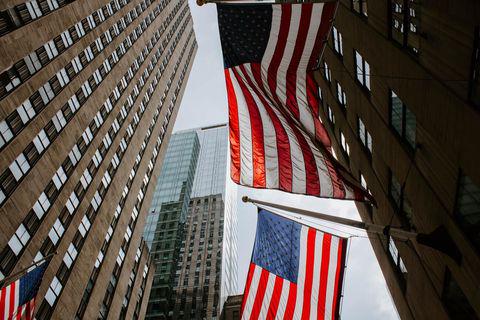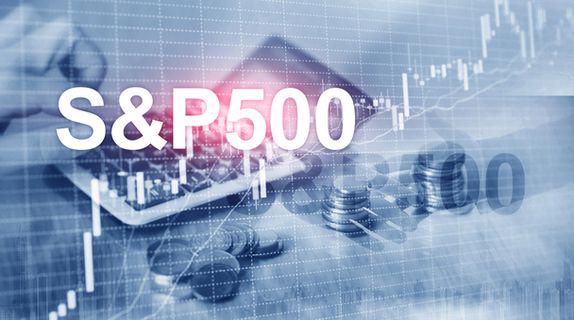
The S&P 500 had a good week due to the impressive start of Q1 earnings and favorable inflation data. In March, the consumer price index rose 5%, lower than the previous month's 6%, and met economists' expectations.

Don’t waste your time – keep track of how NFP affects the US dollar!
Data Collection Notice
We maintain a record of your data to run this website. By clicking the button, you agree to our Privacy Policy.

Beginner Forex Book
Your ultimate guide through the world of trading.
Check Your Inbox!
In our email, you will find the Forex 101 book. Just tap the button to get it!
Risk warning: ᏟᖴᎠs are complex instruments and come with a high risk of losing money rapidly due to leverage.
71.43% of retail investor accounts lose money when trading ᏟᖴᎠs with this provider.
You should consider whether you understand how ᏟᖴᎠs work and whether you can afford to take the high risk of losing your money.
Information is not investment advice
The last time the US Federal Reserve raised interest rates by 75 basis points, there was a Democratic president in his second year in office, and the stock market had just enjoyed two booming years of solid gains. It's not much different than now, except that in 1994, there were no growing fears of a recession, and there was no terrifying, uncontrollable inflation.
In November 1994, Alan Greenspan, the-then Fed's chairman, announced a rate hike after leaving rates unchanged throughout 1993 to fight rising inflation before accelerating. From 3.25% in January 1994, rates rose all year long, even jumping 75 basis points in November. The increase was part of a series of rate hikes by seven times over 13-months between early 1994 and early 1995 to keep the economy from overheating.
In 1994, this move was confusing to the markets, especially to the Clinton White House. Inflation was at its lowest level in 20 years, 2.7%. But with the US stocks booming strongly, the Fed felt the first degree of heat in the economy and feared rising inflation. So the hawkish Fed chose to raise rates preemptively, to the point that critics of the move said it did not allow the economy to flourish. The Fed may have cut the road off a larger economic boom in the bud.
In 2022, Jerome Powell, the current Fed's chairman, finds himself in a very different situation. He is trying to fight the fires already burning throughout the US economy. Inflation has reached 8.6%, its highest level in 40 years. There are now concerns that prices will take longer than expected to calm, even with the Fed raising rates aggressively. Let's not forget the sharp collapse in the US stock market, entering a bear market after declining by more than 22% during the year. Fears of a recession are also growing.
Everyone now fears that the Fed will hit the brakes too hard and too quickly to tame inflation, but it will halt the economy. Powell wants a soft landing for inflation, as Greenspan did in 1994. But it looks like he will get a hard landing.
Back days, economists believed that Greenspan's tightening drove the US into a soft landing, calming markets and inflation while avoiding the recession that often comes from sharp and sudden increases in rates. Today, there is a big difference from the successful "soft landing" of 1994-1995, which is where the Fed currently stands.
Unlike the Fed in 1994, which was one step ahead of inflation, the Fed should have started raising rates gradually in early 2021 with the early signs of inflation. However, it had continued stimulating the economy with 0% interest rates, ongoing monthly bond purchasing, and pumping trillions of cheap dollars into the markets rather than withdrawing them and starting to tighten before it was too late.
Markets are now concerned that the Fed's aggressive approach to inflation could push the economy into recession. In 1994, stock losses were minimal during the year (down only 1.2%), and the Fed managed to avoid a recession and cool inflation. The Dow Jones rose more than 33% in 1995. In 2022, stocks are down more than 22% so far. The Dow Jones fell below the key 30,000 level after raising rates by 75 points last week.

The S&P 500 had a good week due to the impressive start of Q1 earnings and favorable inflation data. In March, the consumer price index rose 5%, lower than the previous month's 6%, and met economists' expectations.

FAANG stocks started recovering. Which ones are the best according to fundamental analysis?

The previous year 2022, was undoubtedly tumultuous for the stock markets, with several stocks plummeting across multiple industries. Analysts have blamed the hard times on inflation, hawkish federal reserve policies, an impending global recession, and the ongoing crisis in Ukraine. This year, however, we're beginning to see some recovery in the stock markets. This article will find a few stocks worth buying this year.

eurusd-is-falling-what-to-expect-from-the-future-price-movement

Greetings, fellow forex traders! Exciting news for those with an eye on the Australian market - the upcoming interest rate decision could be good news for Aussies looking to refinance or take out new loans. The Mortgage and Finance Association Australia CEO, Anja Pannek, has...

Hold onto your hats, folks! The Japanese yen took a nosedive after the Bank of Japan (BOJ) left its ultra-loose policy settings unchanged, including its closely watched yield curve control (YCC) policy. But wait, there's more! The BOJ also removed its forward guidance, which had previously pledged to keep interest rates at current or lower levels. So, what's the scoop? Market expectations had been subdued going into the meeting, but some were still hoping for tweaks to the forward guidance to prepare for an eventual exit from the bank's massive stimulus
Your request is accepted.
We will call you at the time interval that you chose
Next callback request for this phone number will be available in 00:30:00
If you have an urgent issue please contact us via
Live chat
Internal error. Please try again later